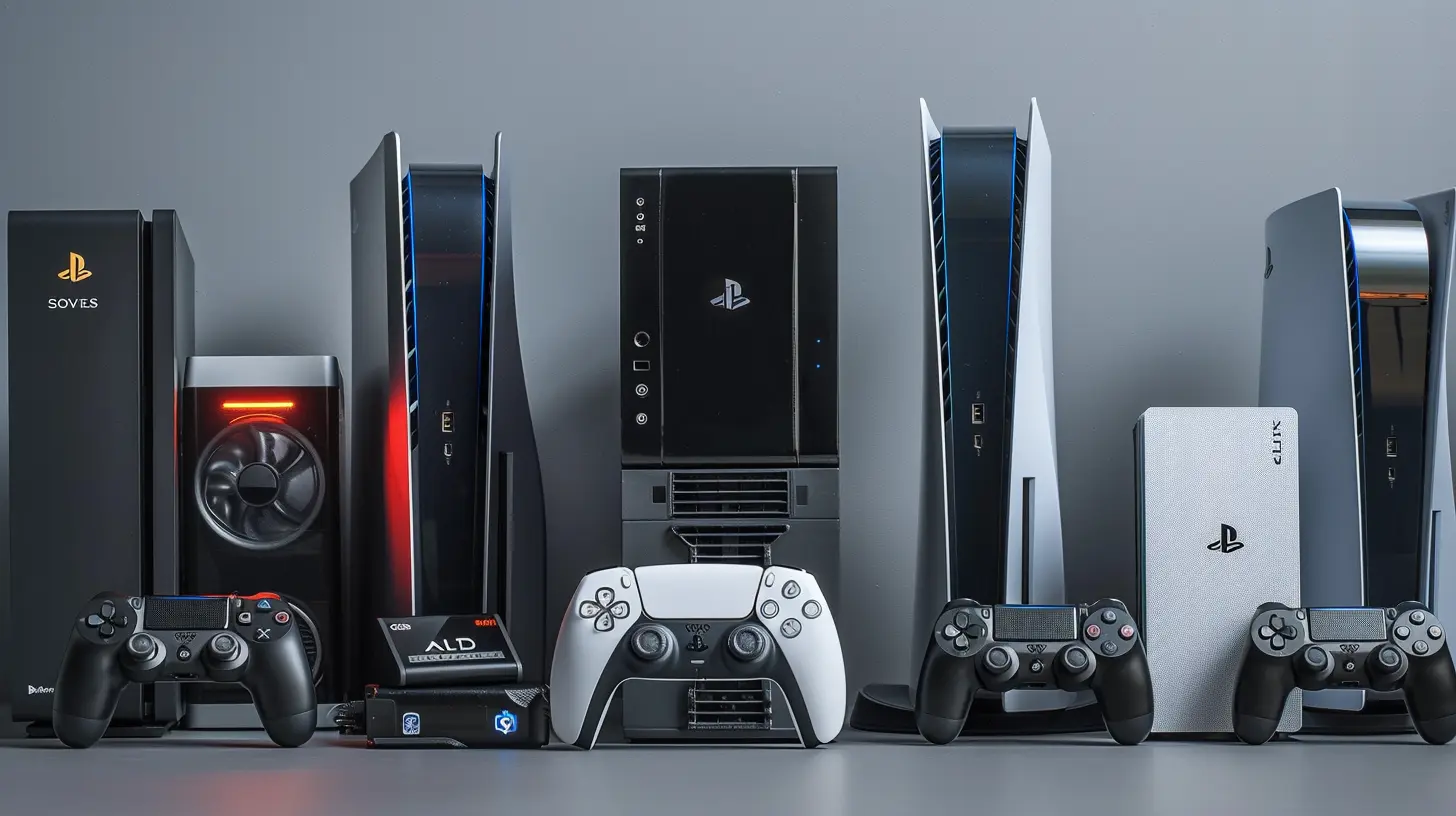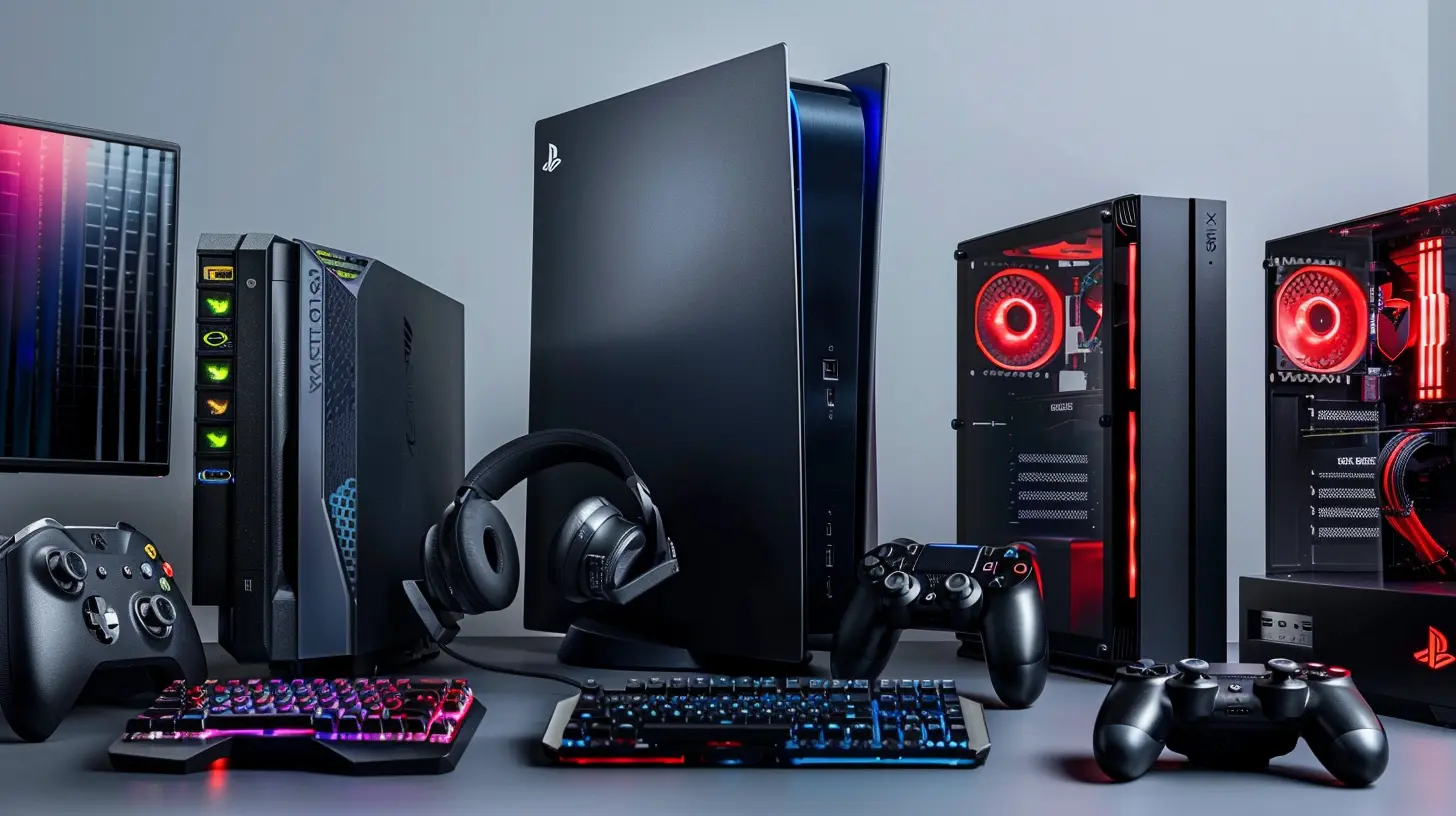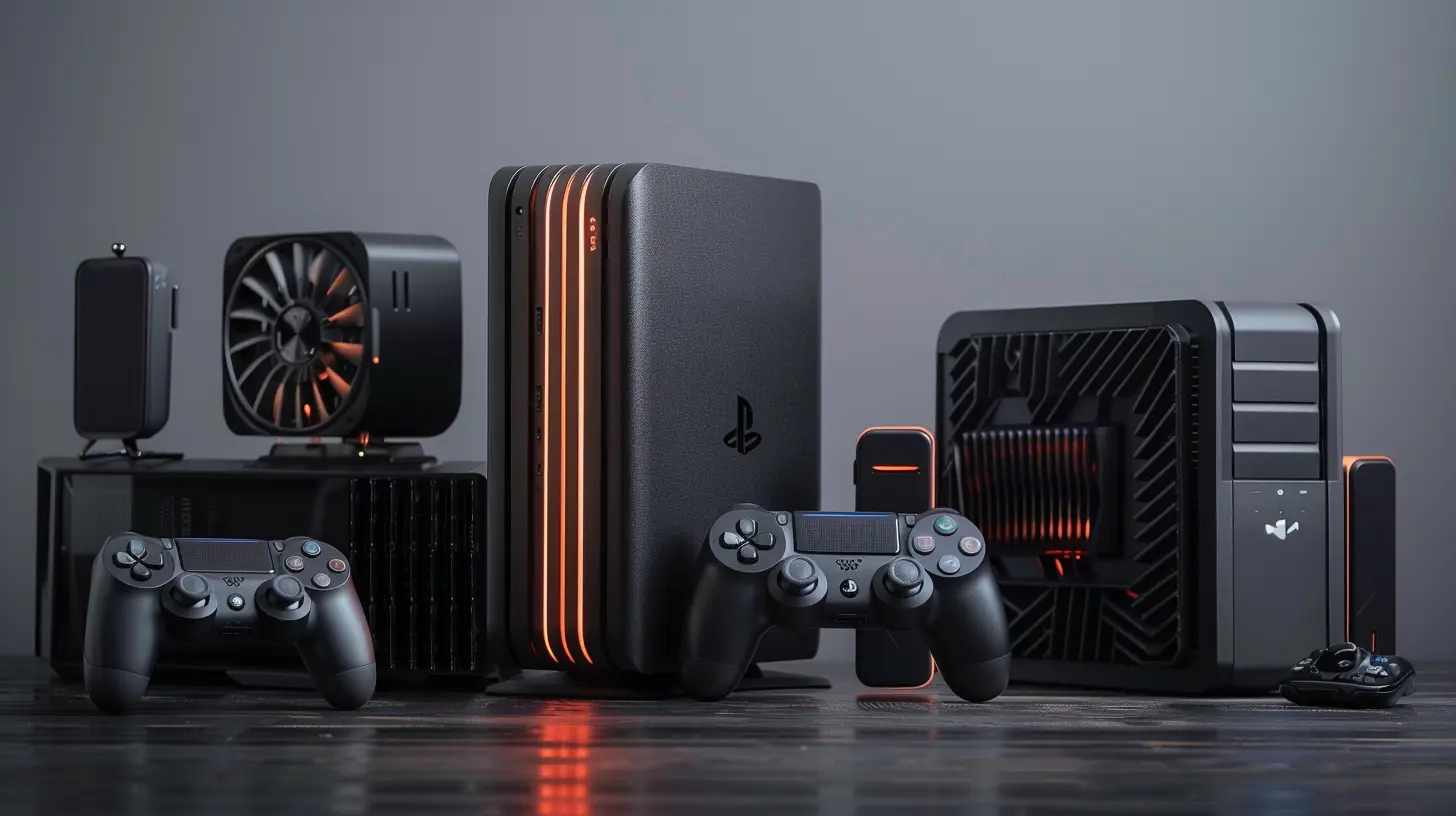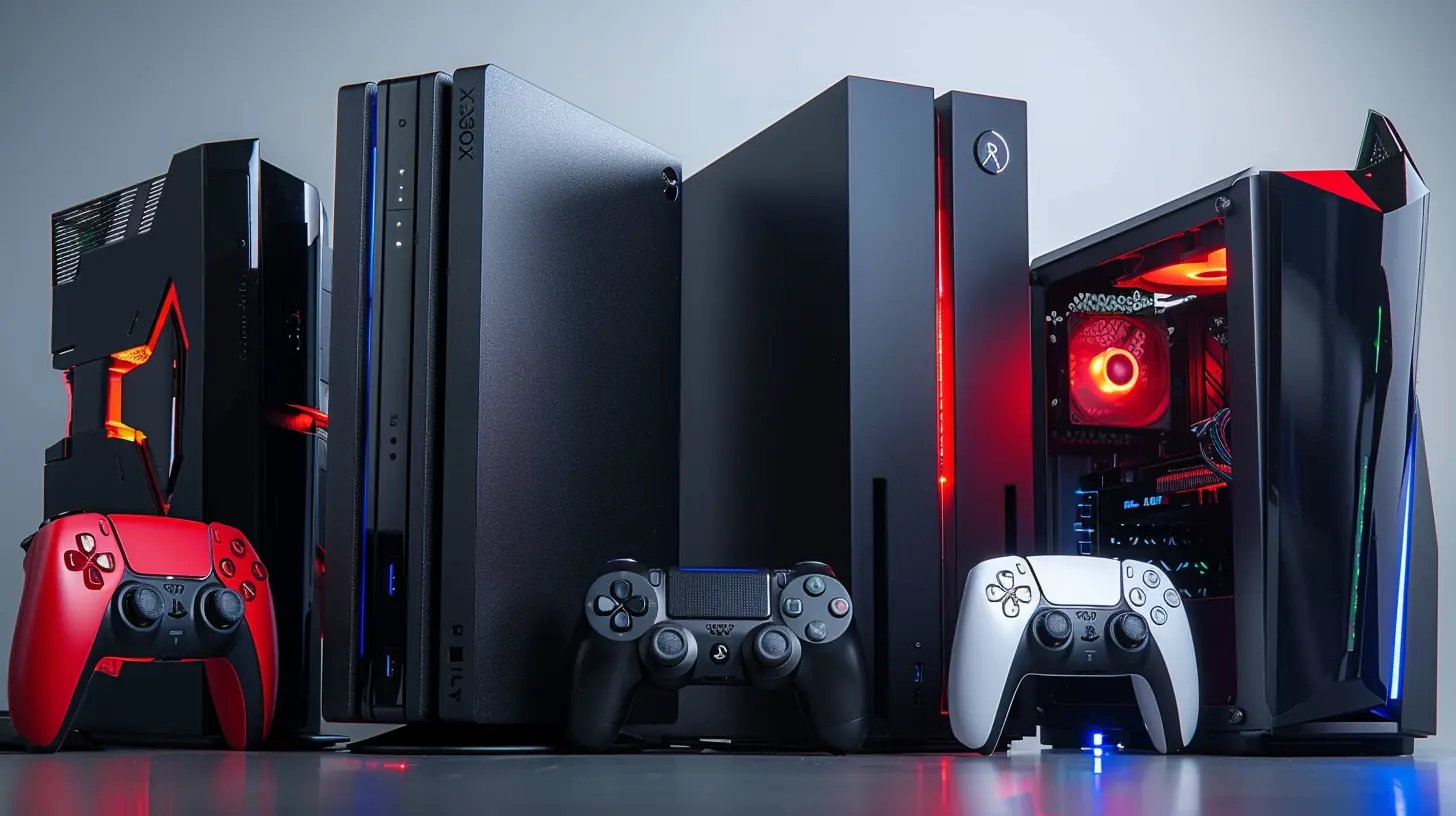Cooling Systems for Console Gamers: Essential or Overkill?
16 September 2025
Let’s be real for a second—console gaming has come a long way. The graphics are smoother, the load times are shorter, and the titles are bigger than ever. But with all that power packed into your favorite gaming box, there’s one thing that’s heating up fast: your console.
So now the question is, are cooling systems for console gamers actually necessary… or just another shiny gimmick to drain your wallet?
Whether you've been greeted with the dreaded fan-whirring symphony during an intense gaming session or you're just curious if that flashy cooling stand on Amazon is worth the hype—we’ve got you covered.
Let’s dive in, shall we?
What’s Actually Going On Inside Your Console?
First off, modern consoles like the PS5 or Xbox Series X are basically gaming PCs in disguise. They pack serious hardware—powerful GPUs, speedy SSDs, and next-gen CPUs—all crammed into a sleek, compact design. And yeah, that beast of a setup gets hot. 🔥Now, manufacturers aren’t clueless. Consoles come with in-built cooling systems—fans, heat sinks, and exhaust vents designed to keep internal temps at a safe level. But here's the kicker: those built-in fans can sometimes struggle under pressure, especially during long play sessions or in poorly ventilated rooms.
That’s where external cooling systems enter the chat.
Types of Cooling Systems for Consoles
Not all cooling systems are made equal. Here’s a quick breakdown of what’s out there:1. Cooling Stands
These are multi-purpose accessories that usually include a vertical stand, extra fans, USB hubs, and sometimes charging docks. They claim to improve airflow and reduce temp spikes during extended gaming.2. Clip-On Fans
These latch onto your console’s vent area and kick into gear, providing a little extra air circulation. They’re portable and inexpensive.3. Thermal Pads and Mods
Usually more on the modding side. Think DIY-level upgrades—better thermal paste application or adding extra cooling pads inside the console. Not for the faint-hearted.4. External Air Coolers
These are bulkier fans you place near your console to enhance general airflow in your gaming setup. Think of them like mini desk fans tailored for your PlayStation or Xbox.
Do Cooling Systems Actually Help?
Here’s where things get spicy. Do they really work?✅ The Pros:
- Extra airflow: External fans and stands can push more air around the console, especially if your setup faces ventilation issues.- Longer gaming sessions: If you’re the “8 hours straight on Elden Ring” type, added cooling may prevent thermal throttling or system strains.
- Increased longevity: Keeping internal components cooler might slow down hardware degradation over time. Think of it as less stress on your console’s heart.
❌ The Cons:
- Marginal gains: Here’s the honest truth—if your console’s in a well-ventilated spot, you probably don’t need extra help. The built-in cooling is already engineered to do the job.- Noise: Many third-party cooling fans can sound like a mini jet engine. Not fun when you're trying to hear footsteps in Warzone.
- Cheap builds: Some cooling accessories—especially bargain options—don’t move much air and have questionable durability.
- Potential warranty voiding: Messing around internally could cause more harm than good.
So, in a nutshell? Yes, they can help in certain situations, but they’re not a magic fix.
When Should You Consider a Cooling System?
Alright, let’s bring it down to real-life scenarios. Here’s when you might actually need one:1. You Game in a Hot Room
If your setup sits in a room that becomes a sauna by mid-afternoon, your console’s natural cooling system is already working overtime. Adding extra airflow could make a noticeable difference.2. Your Console Is in a Tight Space
We see it all the time—consoles cramped into entertainment centers with zero breathing room. That hot air has nowhere to go! Pop in a cooling stand or external fan, and you’ll help with circulation.3. You Game for Long Sessions
Casual gamers who play for an hour a day probably won’t need extra cooling. But marathon gamers streaming for hours or diving into back-to-back sessions? That’s when temps can creep up and throttling becomes a thing.4. You’ve Noticed Performance Drops or Fan Noise
If your console sounds like it’s about to take flight or you’re getting random shutdowns, those are red flags. While not always heat-related, external cooling might help stabilize things until further diagnosis.When It’s Totally Overkill (And a Waste of Your Cash)
Let’s not kid ourselves—plenty of gamers rush to buy accessories thinking it’ll boost FPS or make load times vanish. Spoiler: extra fans don’t do that.Here’s when it’s probably overkill:
- Your console is new and functioning perfectly
- You game for short periods
- Your room temp stays moderate
- Your console has plenty of space around it
In these cases, external cooling is like putting rocket fuel in a sedan—you just don’t need it.
What About Built-In Cooling Systems Like in the PS5 and Xbox Series X?
Both Sony and Microsoft knew the stakes. These newer-gen consoles were designed to handle demanding workloads. The PS5, for example, sports a massive internal fan and a vapor chamber-style heat sink. Xbox? Similar story with a stacked design for vertical airflow.In other words, they were built for stress. Unless something’s actually going wrong—like constant overheating errors—it’s best to trust what’s inside. Slapping on an extra fan just "because" isn’t always smarter.
Tips for Keeping Your Console Cool Without Spending a Dime
Not in the mood to break out your wallet? No problem. Here are practical, zero-cost ways to help keep things chill:- Keep vents clean: Dust is a notorious heat trapper. Hit those vents with a can of air every few weeks.
- Leave room to breathe: Place your console on a flat surface with open space around all its sides. Avoid cabinets with doors.
- Avoid stacking: Don’t place your console on top of other electronics or vice versa.
- Turn it off, not rest mode: Fully powering down after a session allows the internal components to cool completely.
- Limit play during heatwaves: No joke—ambient room temp affects internal temps. If the room’s hot, maybe cool off before rage-quitting in Fortnite.
Are Cooling Systems Worth It? Let’s Wrap It Up
Like a lot of tech debates, the answer is: "It depends."If your console’s running hot, you’re gaming long hours, or your setup has airflow issues, then yeah—an external cooling system might be a solid investment. Even better if you're in a warmer climate.
But if you’ve got a new-gen console, proper ventilation, and only hop on for a few games a week? Then honestly, you’re probably fine without it.
Think of cooling systems like insurance. You might not need it all the time, but when you do—it's a lifesaver. Just don’t fall for the hype that it’s absolutely essential in all setups.
Sometimes, a little smarter placement and regular dusting go just as far as an $80 cooling dock.
Still, if you’re gonna get one, pick a reputable brand. Read reviews. Avoid the $10 fan that rattles louder than your controller’s haptic feedback.
Game safe. Game cool.
all images in this post were generated using AI tools
Category:
Gaming AccessoriesAuthor:

Tina Fisher
Discussion
rate this article
1 comments
Murphy McElroy
Cooling systems can enhance performance and longevity, but gamers must balance necessity against budget and console design.
September 16, 2025 at 4:40 AM

Tina Fisher
Thank you for your insight! Balancing performance, budget, and design is crucial for gamers when considering cooling systems.


